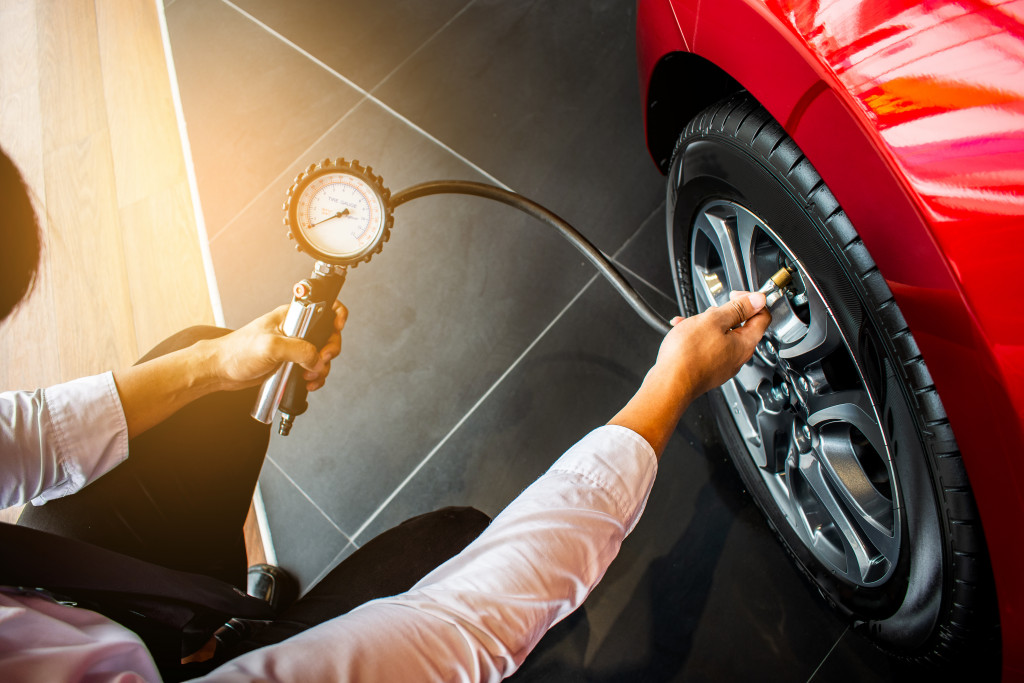- Regular oil changes are essential to keep your car running smoothly and efficiently.
- Brake inspections should be done at least once a year to ensure they are functioning correctly.
- Make sure to check and clean battery terminals periodically for corrosion.
- Ensure all vehicle fluids are regularly checked and topped up as needed.
- Tire maintenance is critical to prolonging the life of your car and ensuring optimal fuel efficiency.
Owning a new car is an exciting journey filled with the allure of the open road and the freedom of mobility. However, regular maintenance is essential to keep that vehicle running smoothly and looking sharp. As a new car owner, you might feel overwhelmed by the plethora of information about car upkeep. Don’t fret; this comprehensive checklist is tailored to ensure your vehicle remains in peak condition.
1. Regular Oil Changes
One of the fundamental aspects of vehicle maintenance is changing the oil. The oil in your car ensures that all the engine parts move smoothly. Over time, this oil can become dirty or run low, leading to engine problems.
Check your vehicle’s owner’s manual to determine how often you should change the oil. Most manufacturers recommend an oil change every 5,000 to 10,000 miles. Regular oil changes prolong your car’s life and help ensure optimal fuel efficiency.
2. Brake Inspection and Maintenance
Brakes are arguably the most crucial safety feature of any vehicle. Regular brake inspections are essential to ensure that they function correctly when you need them the most. Worn-out brake pads or low brake fluid levels can impair the braking performance, putting you and others at risk.
Here are some tips to inspect your brakes:
Visual Inspection of Brake Pads and Rotors
Perform a visual inspection of your brake pads and rotors. If the brake pads appear thin, less than 1/4 inch, it might be time to replace them. The surface of the brake rotors should be shiny from the inside to the edge, with no signs of grooves or lines. If you notice any irregularities, consider taking your vehicle to a professional for further examination.
Understanding Brake Noises
Not all noises indicate brake problems, but a screeching, grinding, or clicking noise when you apply the brakes could suggest an issue. Screeching noises are often a sign of worn-out brake pads, while a grinding noise could indicate that the pads are so worn that metal is touching metal. If you hear any suspicious sounds, it’s best to get your brakes inspected by a professional.
Feeling Brake Pedal Response

A correctly functioning brake system will respond appropriately when you press the brake pedal. If your brake pedal feels spongy or requires more pressure than usual to engage, it could indicate a problem with the brake fluid or the brake lines. A brake pedal that is hard to press may indicate a problem with the brake booster. These instances require immediate attention from a certified mechanic.
Checking Brake Fluid Levels
Regularly checking your brake fluid can help prevent significant brake issues. Brake fluid should be clear to light yellow in color. It may be time to change if it becomes dark or contains debris. Always ensure the brake fluid level is within the “MIN” and “MAX” lines on the reservoir. Low brake fluid levels can reduce braking efficiency, while overfilled can lead to brake failure. Always maintain the recommended level by your vehicle’s manufacturer.
3. Battery Maintenance
The car battery is pivotal in ensuring your vehicle starts and runs smoothly. Over time, the battery terminals can corrode, leading to poor connection and difficulty starting the car.
Make it a habit to check the battery terminals periodically for any signs of corrosion and clean them using a battery cleaning brush. Moreover, ensure that the battery is securely fastened to prevent any damage from vibrations. If your car struggles to start or the lights dim when the AC or radio is on, it might be time to consider replacing the battery.
4. Fluid Checks and Top-Ups
Apart from engine oil, several other fluids are crucial for the smooth operation of your vehicle. This includes transmission fluid, power steering fluid, brake fluid, coolant, and windshield washer fluid.
Regularly check the levels of these fluids and top them up if necessary. If you notice any sudden drops in fluid levels, it might indicate a leak, and you should consult with a mechanic. Keeping these fluids at their optimal levels ensures your vehicle runs smoothly and reduces the chances of unexpected breakdowns.
5. Regular Tire Maintenance

Tires are your car’s only contact with the road, so their maintenance is paramount. Regularly inspect your tires for signs of wear, tears, or punctures. Also, ensure that they are inflated to the recommended pressure to avoid uneven wear and to ensure optimal fuel efficiency.
Every once in a while, especially if you notice any vibrations while driving or your car seems to pull to one side, visit a professional tire shop. They can provide services like tire balancing, rotation, and alignment. Additionally, professionals at a tire shop can advise when to replace your tires, ensuring you always have the best grip on the road.
Closing Thoughts
Maintaining a car might seem daunting for a new owner, but this checklist ensures your vehicle remains in top-notch condition. Regular maintenance not only prolongs the life of your car but also ensures safety and optimal performance on the road. So, embrace the responsibility, keep up with these checks, and enjoy the thrill of the open road with peace of mind.

